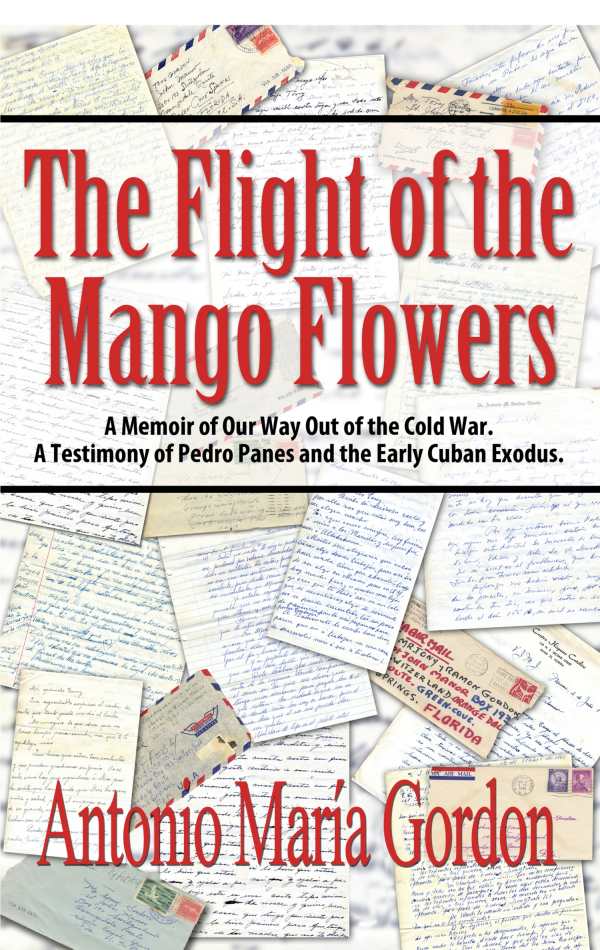
The Flight of the Mango Flowers
A Memoir of Our Way Out of the Cold War. A Testimony of Pedro Panes and the Early Cuban Exodus.
The Flight of the Mango Flowers adds perspective to the events following the Cuban revolution.
In his memoir, Antonio Gordon recreates the era of the “Mango Flowers,” during which more than 14,000 Cuban children were sent by their families to South Florida to escape the terror and hardships of the early days of the Castro regime. The Flight of the Mango Flowers is a remembrance that is amply supported not only by dozens of mostly personal photographs, letters, and documents, but also by many published materials. It is a history of Cuba’s darkest hours and of a counterrevolution that never came to pass.
In early 1961, while still in high school, Antonio boarded a DC-3 for Key West, Florida, carrying only a suitcase, an 8mm Kodak Brownie camera, and his Catholic liturgical missal. The popular Cuban revolt of 1959 had quickly yielded to a harsh and brutal form of communism. Young Antonio became a member of the clandestine children’s exodus, later dubbed Operation Pedro Pan, that was intended to last only until a counterrevolution had restored peace, and some semblance of democracy and opportunity, to his homeland. Aided by the Catholic Church, Cuban exile organizations, and the US government, Antonio was soon housed in a camp for Cuban children, and found himself attending a Catholic school in Jacksonville.
Beginning with a short summary of Cuba’s history, the author seamlessly works in his personal story of family, school, and church. His personal experience often brings insights to events. In March 1960, young Antonio was in a third-floor classroom in downtown Havana when he felt a tremor and saw the smoke of the French ship La Coubre, carrying guns for Castro’s army, exploding in the nearby harbor. He speculates on the causes of this “accident” that so profoundly impacted US-Cuba relations. Antonio was in Florida when the Bay of Pigs “fiasco” took place in April 1961, but his parents later told him about being awakened on that night by what they at first thought was thunder. He discusses the confusion and poor timing of the invasion by CIA-supported anti-Castro exiles, and its impact on the counterrevolution.
Perhaps the most striking achievement of the memoir is his self-portrait, a composite not only of the doctor’s memory but also of the many letters he includes from his parents and friends during this time, and the many photographs taken by his camera and others. The rendering is of a fully rounded Antonio: a cherished son and dear friend, a curious student with academic gifts as well as challenges, a humble young man on the threshold of adventures and discoveries. Antonio shows his exuberance and good humor—as well as his fear and loneliness—as he makes new friends, struggles with a new language, and becomes a proud citizen of a new country.
With The Flight of the Mango Flowers, the author speaks to his countrymen and adds to their perspective of the events following the revolution.
Reviewed by
Joe Taylor
Disclosure: This article is not an endorsement, but a review. The publisher of this book provided free copies of the book and paid a small fee to have their book reviewed by a professional reviewer. Foreword Reviews and Clarion Reviews make no guarantee that the publisher will receive a positive review. Foreword Magazine, Inc. is disclosing this in accordance with the Federal Trade Commission’s 16 CFR, Part 255.
